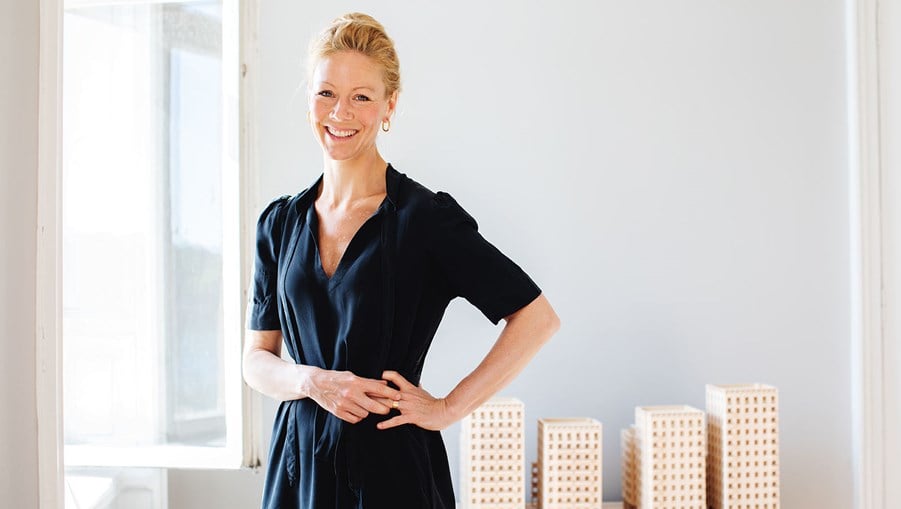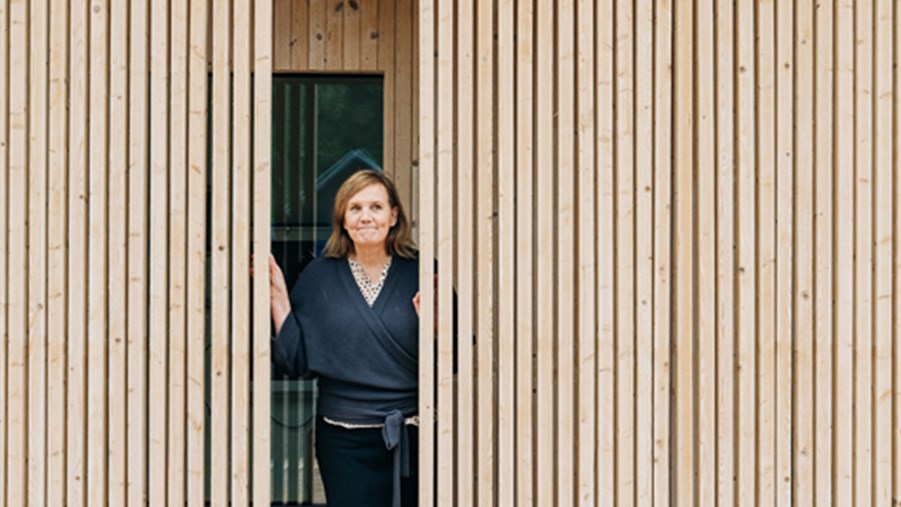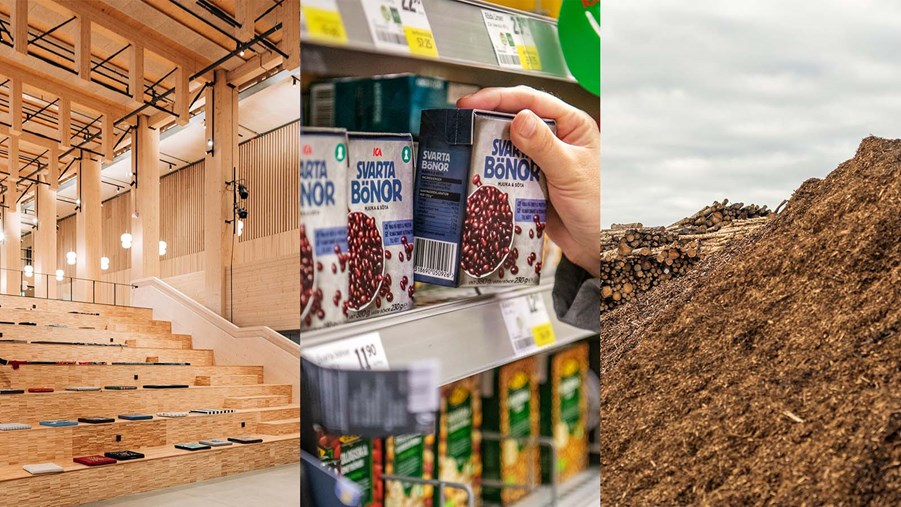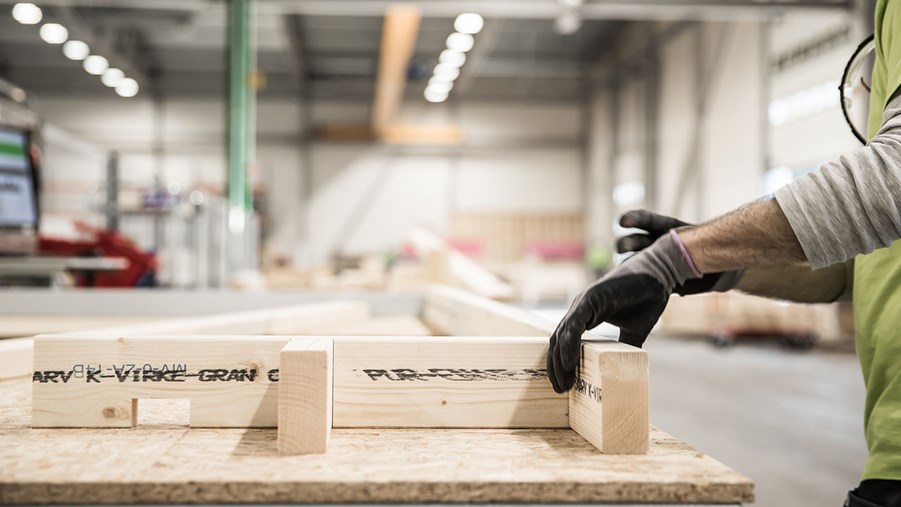
More than half of the timber from the Swedish forests goes to sawmills to be processed into different types of timber and processed products such as glulam.
Construction timber for homes, high-rise buildings, halls and bridges
Construction timber is typically made from spruce and is used for walls, floors, beams and roofs in houses, public buildings, sports halls, wooden bridges and much more. If wood is to be used as part of a load-bearing structure, such as trusses, joists and walls, structural timber is used that is classed according to durability criteria. Glulam is used for larger dimensions and usually consists of 45mm-thick slats that are glued together to form large structural elements.
Did you know that a building made from wood sequesters carbon dioxide for more than a hundred years and that if half of Sweden’s apartment buildings in 2025 were built in wood instead of other materials, the climate impact during the construction phase would be reduced by around 40 per cent each year? Read more about construction timber at Swedsih Wood page.
A renewable building material
Wood is a renewable building material. Modern wood building techniques also consume low levels of energy during production. If buildings are constructed at scale, we can add a number of positive effects: speed, quality, cost predictability, simpler logistics, better working environments and job opportunities outside cities.
Read more about timber construction at Sveriges Träbyggnadskansli, (Sweden’s Timber Building Agency, website in Swedish), which is a collaboration between Swedish Forest Industries and Trä- och möbelföretagen, (the Timber and Furniture Association).
Carpentry wood for furniture, interior design and flooring
Carpentry wood is used for interiors such as furniture, windows, doors, stairs, furnishings and floors. Pine is typically used for carpentry timber, partly for its ability to be processed into good surface quality, and partly due to the stability of the heartwood in weather-exposed sections.
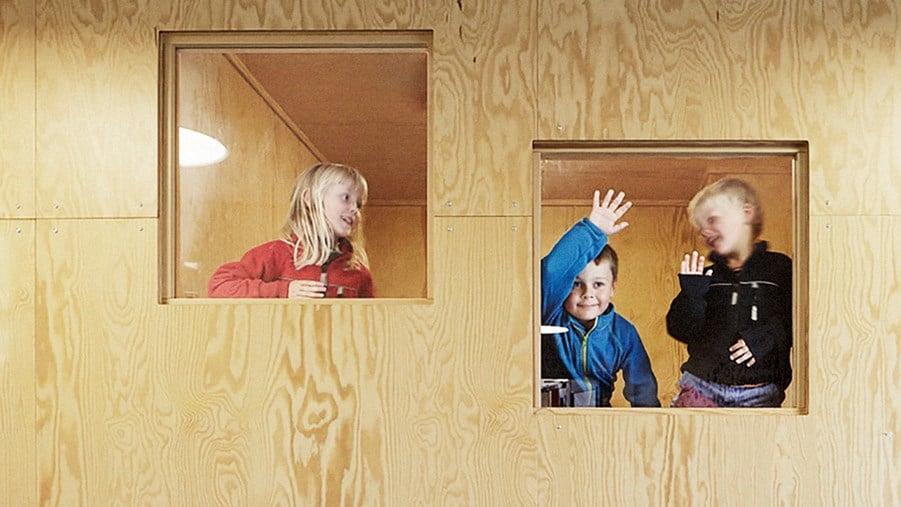
Råå pre-school in Helsingborg representing excellent Swedish architecture in wood and reflects and drives forward the times in which we live. Which is why the pre-school won the 2016 Swedish Wood Award. Visit Swedish Wood website for more inspiration.
